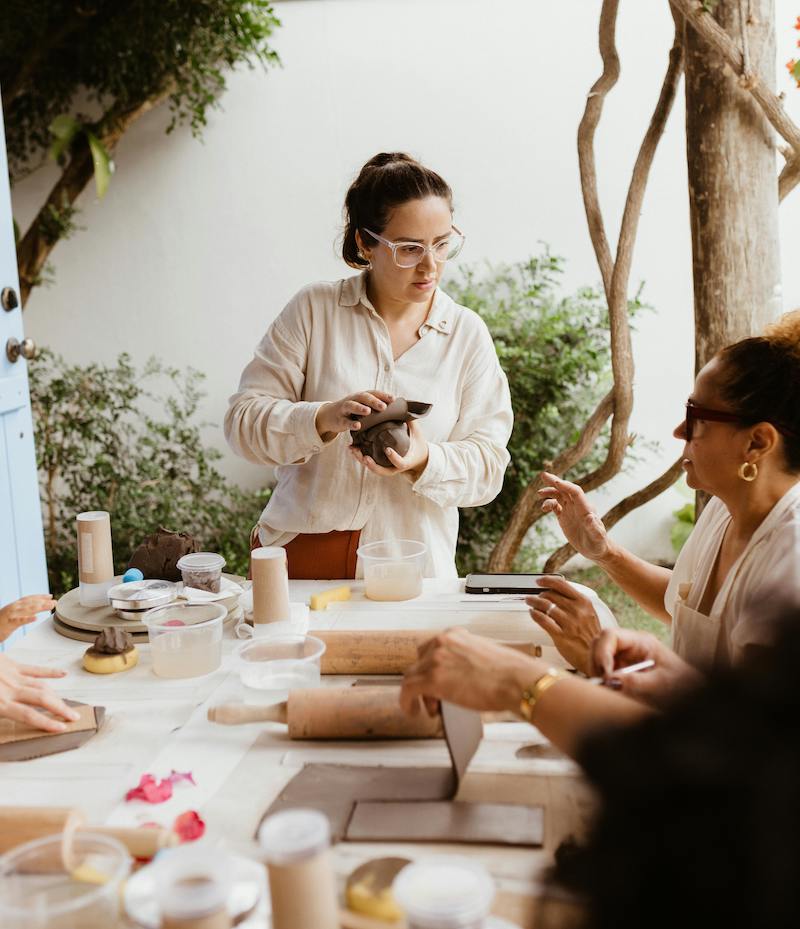You may be considering taking on teaching art workshops to boost your cash flow as the economy softens. Yes, workshops can be profitable, but they also have other advantages. In disguise, they are also a fantastic way to boost to your own creative process – and to relieve artist’s block. Here’s why:
As makers, we tend to settle into the way we do things in our hands-on practice informed by lots of trial and error, and then just stick with it. However, this can often close us off to new learning. Teaching art workshops can shake off those shackles of routine. Being around new people – amateurs and first-timers experimenting and creating – will often bring up questions like, ‘Will it work if I do it this way?’ or alternatively you may observe someone using their own hack.






